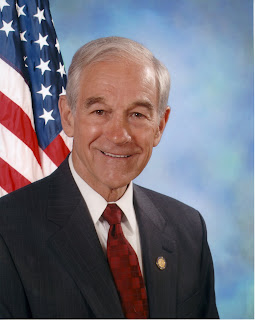 | WASHINGTON - February 7, 2011, Domestic Monetary Policy and Technology Subcommittee Chairman Ron Paul announced the witnesses for the Subcommittee’s hearing to examine the impact of Federal Reserve policies on job creation and the unemployment rate. The hearing will be held on Wednesday, February 9th at 10 am in room 2128 Rayburn.
Subcommittee Chairman Paul said, “I’m very pleased to hold our first subcommittee hearing in the new Congress on a topic that could not be more critical, namely unemployment. Despite enormous amounts of monetary and credit expansion by the Federal Reserve in recent years, the nation’s unemployment picture remains bleak. While many focus on the impact of fiscal policies on employment, the effect of monetary policy often goes unexamined. |
In my view we are now experiencing the bust that inevitably results from the misallocation of capital and human resources in a period of artificially cheap credit. It is important to understand the Federal Reserve’s role in creating today’s unemployment crisis, while also highlighting that high unemployment and low economic growth can persist even in the face of tremendous monetary inflation.”
The Federal Reserve has taken unprecedented action to provide liquidity to financial markets and some U.S. corporations; however, unemployment remains at 9 percent. The hearing, entitled Can Monetary Policy Really Create Jobs?, will focus on the Fed’s recent actions, the likelihood those actions will reduce unemployment, and the critical role of the private sector in job creation.
While the Obama administration and Democrats in Congress believe increased government spending will improve the nation’s economy, Republicans on the Financial Services Committee know economic growth depends on providing the private sector, especially small businesses, with the certainty they need to create jobs. The Fed’s policies, as well as the Obama administration’s unsustainable debt and spending, continue to prevent small business owners from growing and hiring because of continued uncertainty over new taxes, higher interest rates, and the expanding role of government in the economy.
On November 3, 2010, the Federal Reserve announced that it planned to purchase $600 billion in long-term Treasuries (dubbed “QE2”). This is the second time since the 2008 financial crisis that the Federal Reserve has engaged in quantitative easing. The latest round of quantitative easing, along with the Fed’s action to bailout financial companies, has added trillions of dollars to the government balance sheet.
Scheduled to testify at the hearing:
· Thomas J. DiLorenzo, professor of economics, Sellinger School of Business, Loyola University, Baltimore, Maryland
· Dr. Richard Vedder, professor of economics, Ohio University
· Dr. Josh Bivens of the Economic Policy Institute, Washington, D.C. ###
TEXT CREDIT:
Committee on Financial Services • 2129 Rayburn House Office Building • Washington, DC 20515 • (202) 225-7502 For Press Inquiries: (202) 226-0471
IMAGE CREDIT:
Ron Paul












